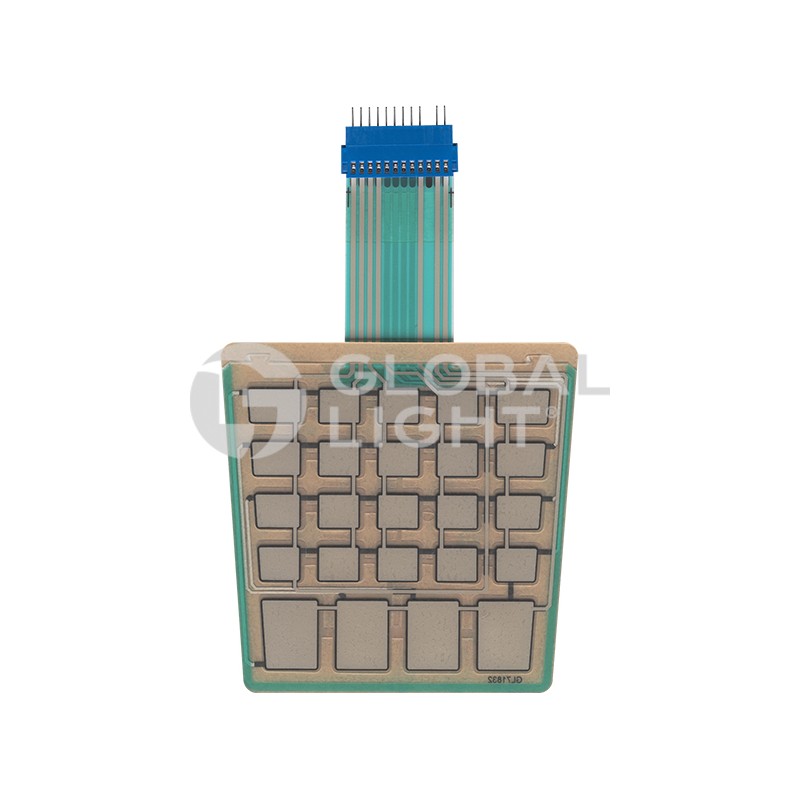Recognizing Membrane Layer Changes: The Trick to Trustworthy and long lasting Controls

What Are Membrane Switches?
Membrane buttons are an innovative service in the realm of interface technology, incorporating capability and style seamlessly. These gadgets function as a user interface between individuals and electronic systems, incorporating a number of components into a portable format. Normally built from adaptable, slim layers of products, membrane layer buttons are designed to reply to touch, making it possible for users to communicate with equipment and electronic gadgets efficiently.
The key elements of a membrane switch include a printed circuit layer, visuals overlay, and a spacer layer that avoids unintended activation. The visuals overlay can be tailored to show brand name identity or customer choices, enhancing appearances while making certain functionality. Membrane layer buttons are commonly used in numerous applications, consisting of medical tools, consumer electronics, and commercial devices, owing to their resilience and resistance to environmental elements such as moisture and dust.
Among the key benefits of membrane buttons is their ability to stand up to wear and tear, making them ideal for high-traffic atmospheres. Additionally, they are light-weight and need very little area, allowing for ingenious styles in item development. Overall, membrane switches over represent a reliable and functional selection for modern digital interfaces, weding technology with user-centric layout concepts.
How Membrane Changes Work
The operation of membrane layer switches rest on a basic yet reliable device that equates user input right into electronic signals. These switches contain several layers, usually including a visuals overlay, a spacer layer, and a circuit layer. When a customer presses the switch, the leading layer deforms, enabling a conductive element in the circuit layer to reach a corresponding conductive pad on the bottom of the graphic overlay. This call shuts the circuit and sends a digital signal to the gadget, showing that the button has been turned on.
The style of membrane switches can differ, however they typically incorporate domes or tactile aspects to give feedback to the individual, enhancing the general experience - membrane switch. The materials utilized in membrane layer switches, such as polyester or polycarbonate, contribute to their toughness and resistance to environmental variables, including moisture and dirt. Furthermore, the printed circuits are typically enveloped, which shields them from deterioration in time.
Benefits of Membrane Switches

Additionally, membrane buttons are understood for their resilience. Constructed from robust materials, they are resistant to dust, wetness, and physical wear, which substantially expands their life expectancy contrasted to conventional mechanical switches. This sturdiness makes them specifically appropriate for high-traffic environments and applications calling for longevity.
Another substantial benefit is the simplicity of cleansing and maintenance. read The smooth surface area of membrane changes lessens dirt build-up and is usually unsusceptible spills, making them suitable for settings that require regular sanitization.
In addition, membrane buttons use a streamlined account, resulting in a thinner design that can be incorporated into different gadgets without adding mass. This attribute not only improves the aesthetic pop over to these guys charm yet likewise adds to a much more ergonomic item design.
Applications of Membrane Buttons
User-friendly and versatile, membrane layer buttons discover applications across a large range of industries, consisting of medical tools, consumer electronics, and industrial equipment. In the medical area, these switches are important to tools such as diagnostic equipment, client surveillance systems, and infusion pumps, where dependability and ease of cleansing are crucial. Their capability to preserve and stand up to rough environments performance makes them excellent for such applications.

In consumer electronics, membrane switches are utilized in items like microwaves, washing equipments, and remotes - membrane switch. Their streamlined layout allows for intuitive interface, boosting the general customer experience while providing toughness and resistance to use and tear
Industrial tools likewise gains from membrane layer switches, especially in control panels for equipment and automation systems. These switches use security versus dust and dampness, making sure constant performance in challenging atmospheres. Furthermore, their personalized attributes enable suppliers to tailor them to details functional requirements, boosting performance and functionality.
Choosing the Right Membrane Layer Change
When selecting a membrane button, it is crucial to think about different factors that affect performance and suitability for particular applications. The primary factors to consider consist of ecological conditions, tactile comments, resilience, and layout specifications.
First, analyze the operating environment; switches exposed to dampness, chemicals, or extreme temperature levels require details materials to make sure longevity my response and functionality. Next, examine the demand for responsive feedback. Depending upon user interaction, some applications may gain from a responsive feedback to confirm activation, while others might favor a non-tactile style for aesthetic reasons.
Durability is an additional vital aspect; membrane buttons should be created to withstand frequent use, impacts, and abrasion. Make certain the selected button can endure the expected lifecycle, especially in high-usage situations.

Final Thought
In conclusion, membrane switches over serve as necessary parts in the layout of sturdy and trusted control systems throughout different industries. The versatility of membrane layer changes enables for tailored solutions that satisfy details operational needs, enhancing their relevance in modern innovation.
Membrane switches over stand for a crucial facet of contemporary interface design, mixing functionality with strength in different applications.Membrane layer switches are an advanced service in the world of individual interface innovation, integrating performance and layout perfectly. Typically constructed from flexible, thin layers of products, membrane layer switches are created to respond to touch, allowing individuals to engage with machinery and digital devices successfully.
The layout of membrane layer buttons can differ, but they typically include domes or responsive components to supply feedback to the customer, enhancing the overall experience.In conclusion, membrane layer changes serve as crucial components in the layout of dependable and durable control systems across various sectors.